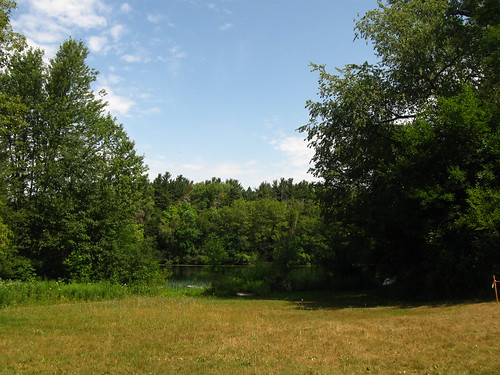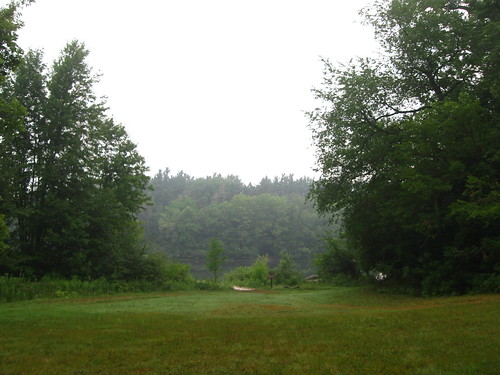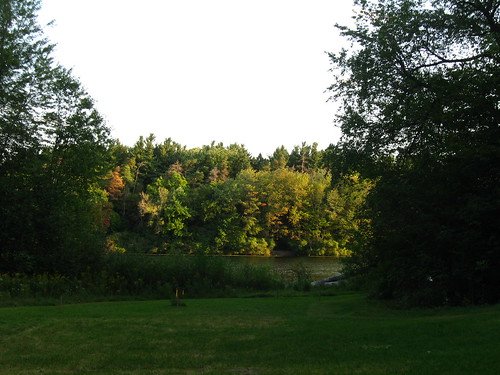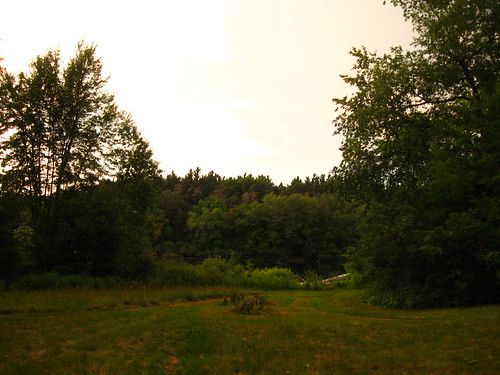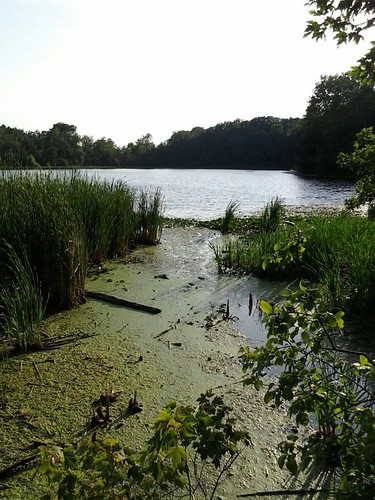Living through this summer of far-hotter-than-normal days in Ann Arbor - home to the
University of Michigan Wolverines - and working in environmental and natural resource management, I am thinking about the on-the-ground effects of climate change more than often. (Maybe more than is healthy.)
I hope for rain. I hope for cool winds. I hope for clouds even.
We get heavy sun that heats up asphalt, withers trees, and browns the grass. We get hot gusts of dry wind that buffet you into sweat-stained submission. We get few clouds, and those we get rarely carry rain for us.
It's
the largest drought area ever declared, but some people are wondering if this is
a forecast of things to come, or even the new normal. However, people from
Mississippi River managers to
Michigan cherry crop farmers to almost anyone paying attention in much of the country is recognizing that
there is a massive drought happening and that
weather has gone haywire (
unless you happen to be Newton Leroy Gingrich).
And these are just the things that are happening right now. For University of Michigan fans, things could well get much worse.
According to
research done in 2007 by Daniel McKenney and colleagues, the Ohio buckeye - which is the state tree of Ohio as well as the mascot to Ohio State University - will be shifting northward over the next 100 years. This means they will be shifting into Michigan, moving from
its current distribution and possibly
into Michigan (according to the CSIROmk35 A1B prediction model).
This will turn Michigan into the new "Buckeye State", and in Saginaw Forest, there are already many buckeye saplings that have been growing quite happily over the past number of years. Take a walk near the tree-tee-pee and see for yourself. (
Here's the Ohio DNR's handy identification page.)
Will this growth get a lot of Michigan (and Michigan State) fans quite angry about the whole thing, and maybe start to think of climate change as something real? Yes, it's a strange way to introduce people to the effects of climate change, but many people have visceral attachments to sports, and for many people this includes university sports (even if they never attended that particular university).
What might make this an even greater blow for University of Michigan fans is that
the last known wolverine living in the state died in 2011. With the local extirpation of the wolverine - the UofM mascot - and the encroachment of their largest rival's mascot onto home territory, could there be some sort of climate change education and action that come out of this? True,
it was tried back in 2008, when the implications of McKenney's paper became recognized, but maybe the time is ripe again?
While part of this is written as tongue-in-cheek, another part of me is trying to think of ways to get people latched onto simple fact that climate change is not just happening right now, but
has been happening for decades already; that the time to act is not tomorrow, but yesterday; and that the fact we haven't done a lot is only going to require us to work all the harder down the line.
